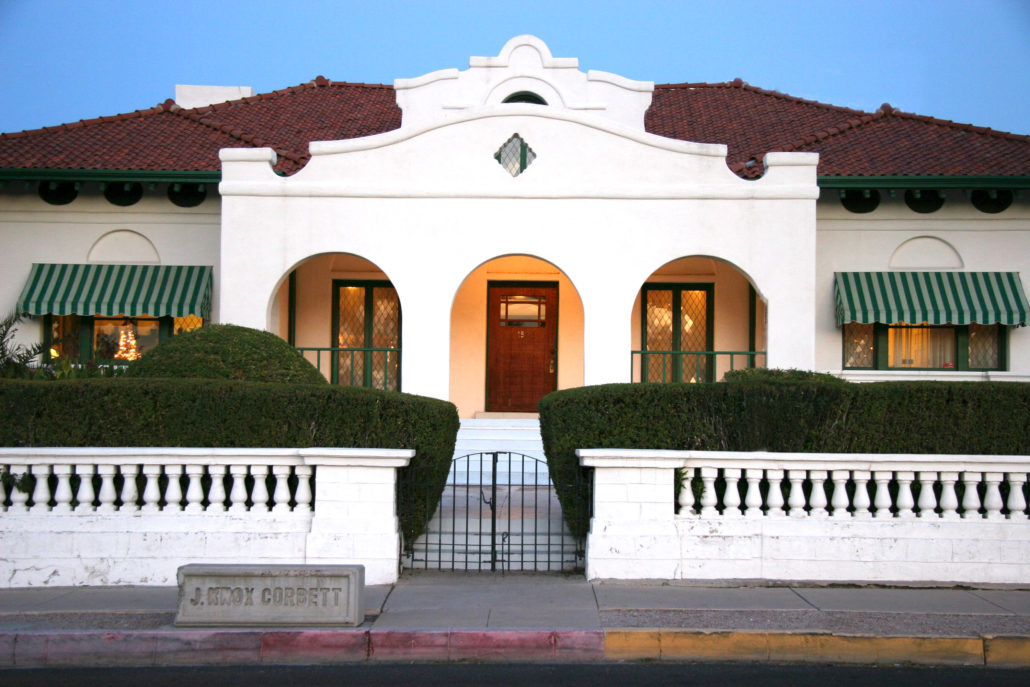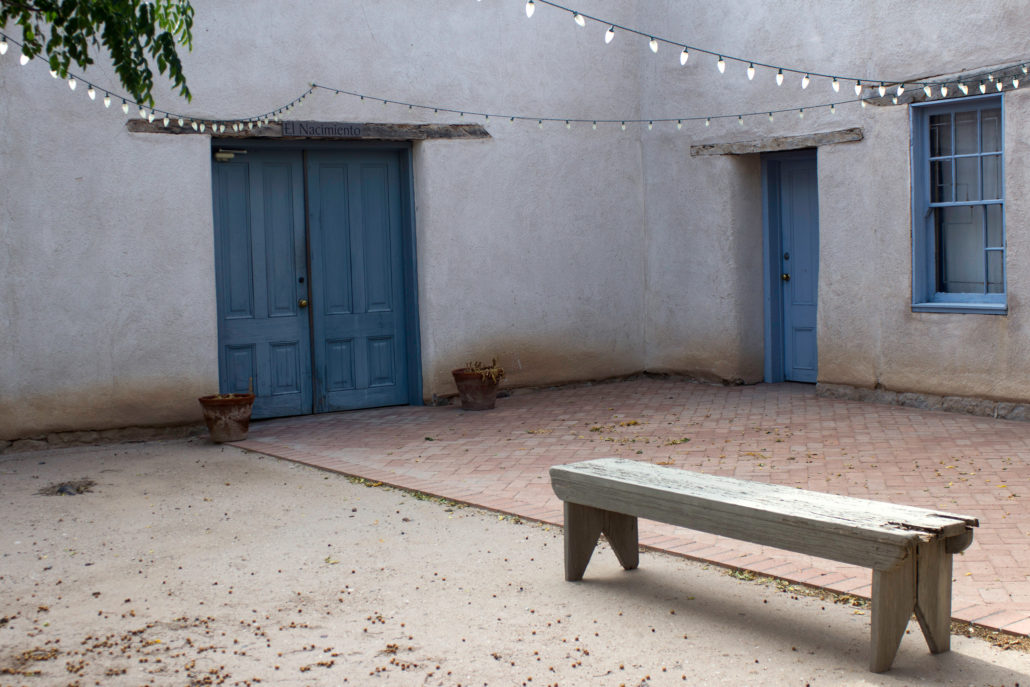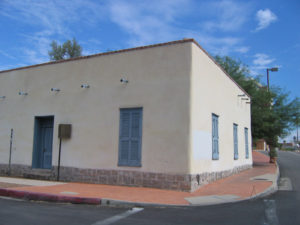J. Knox Corbett House
The J. Knox Corbett House is temporarily closed to the public.
The J. Knox Corbett House, an elegant two-story, stucco-covered brick structure built in the Mission Revival style, was completed in 1907 by David Holmes. Its primary residents, the Corbett family, lived in the home for fifty-six years. J. Knox Corbett and his wife Lizzie Hughes Corbett built the house on Main Avenue, next to the Stevens House. Petra Stevens, Lizzie’s aunt and godmother, appealed to Lizzie to live near her and gifted the adjacent land to the Stevens property. In its heyday, the Corbett House served as a social hub: the family enjoyed hosting parties, clubs, and civil meetings for many years.
La Casa Cordova
La Casa Cordova is one of the oldest buildings in Tucson’s downtown. This historic adobe home, which is on the National Register of Historic Places, is an example of a Sonoran row house, a common southwest building style popular in the late 19th century. This property is a unique marker of time, tracking the evolution of Tucson within its structure—with the earliest portion of the house dating to the mid-1840s, during Tucson’s Mexican Period (1821-1853).
Phase 1 of La Casa Cordova’s most recent preservation project was completed in 2024.
La Casa Cordova es uno de los edificios más antiguos del centro de Tucson. Esta histórica casa de adobe, que figura en el Registro Nacional de Lugares Históricos, es un ejemplo de casa adosada sonorense, un estilo de construcción común en el suroeste, popular a fines del siglo XIX. Esta propiedad es un marcador único del tiempo, que sigue la evolución de Tucson dentro de su estructura – con la parte más antigua de la casa que data de a mediados de la década de 1840, durante el período mexicano de Tucson (1821-1853).
La primera fase del proyecto de conservación más reciente de La Casa Cordova concluyó en 2024.
Fish House
The (Edward Nye) Fish House is open during public hours.
The (Edward Nye) Fish House, now part of the John K. Goodman Pavilion of Western Art, dates to approximately 1868. It originally was a unique “L” shaped house made with adobe blocks and stucco. The Fish House currently houses the Museum Store and rotating exhibitions.
Romero House
The Romero House, believed to have been built in 1860, has undergone numerous alterations and is now home to the Romero House Potters ceramics studio. It is believed that part of the Presidio wall is incorporated into a section of the house. The property is named for Leonardo Romero, one of the original owners of the property.
Stevens/Duffield House
The Stevens/ Duffield Houses are located west of the Main Museum building and are connected to the Edward Nye Fish House. Today, they serve as gallery spaces and the home of the Museum’s award-winning restaurant Café a la C’Art. Interestingly, both of the properties and their original owners of the buildings have intriguing, intertwined histories.





